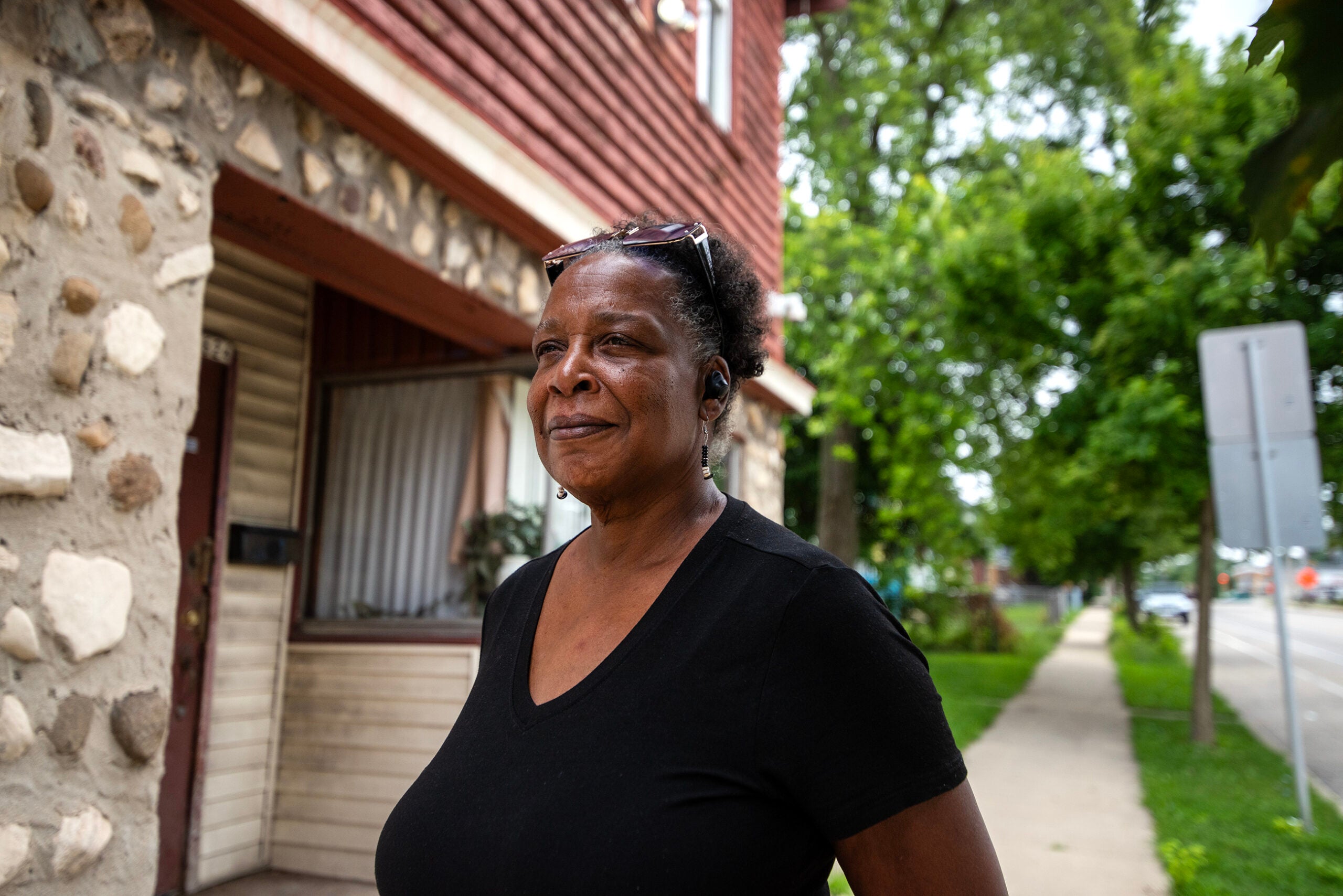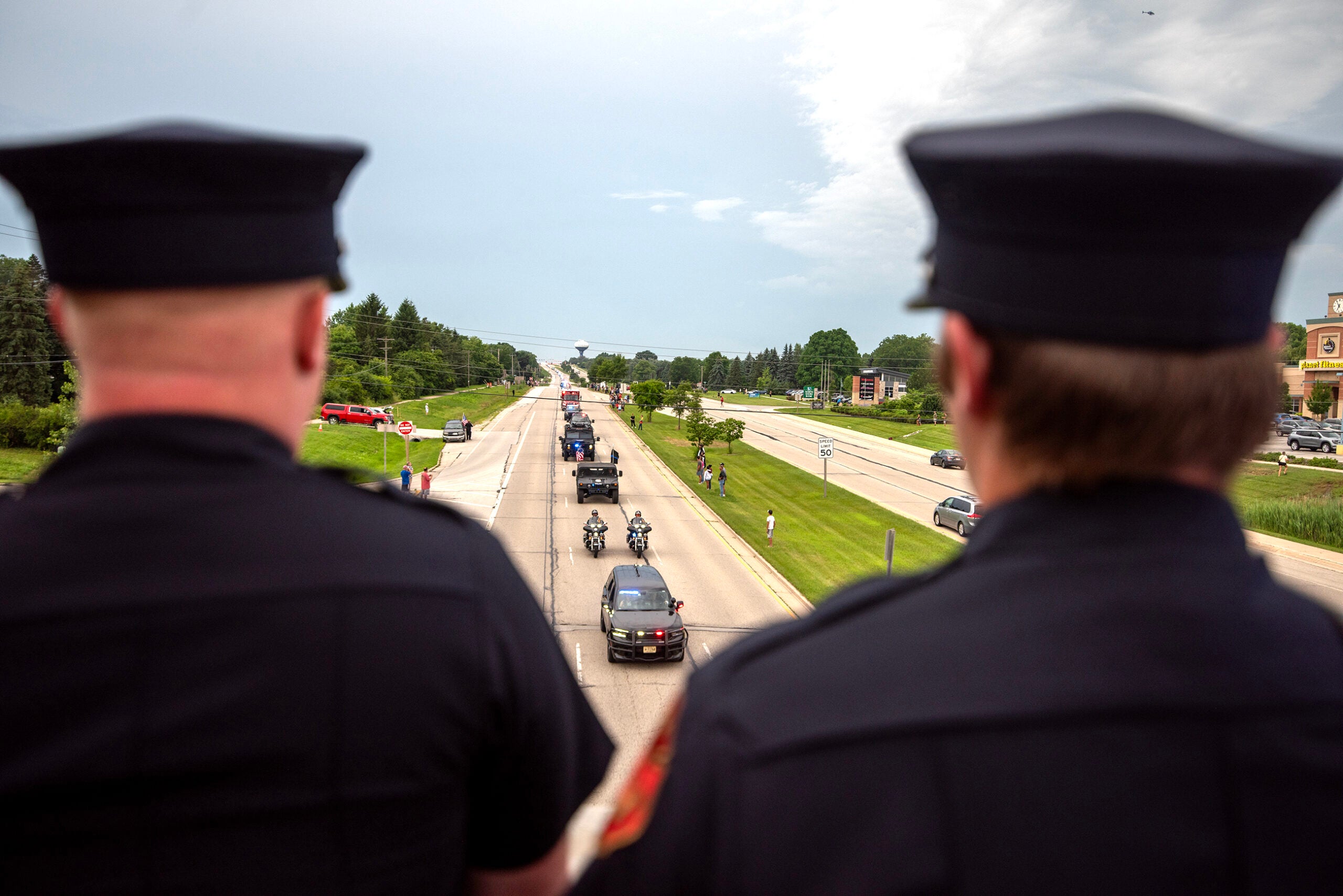The man who killed two police officers during a traffic stop in Barron County last month had been prohibited from possessing firearms because of a mental health commitment order over a decade ago.
But he was able to legally purchase the AR-15 he used to kill the officers — along with many other guns he kept in his home and vehicle — after that order was allowed to expire in 2011.
Barron County District Attorney Brian Wright released a report Friday on the April 8 shooting deaths of Chetek Officer Emily Breidenbach and Cameron Officer Hunter Scheel that formally states that the slain officers’ use of force was justified during the exchange of gunfire that killed their attacker. In the report, Wright calls the two officers heroes.
News with a little more humanity
WPR’s “Wisconsin Today” newsletter keeps you connected to the state you love without feeling overwhelmed. No paywall. No agenda. No corporate filter.
“Their bravery, courage and sacrifice saved countless lives that day,” Wright stated.
According to the report, Breidenbach, 32, and Scheel, 23, were killed by 50-year-old Glenn Perry of New Auburn in what Wright called a premeditated shooting and “the epitome of evil.”
The report states that on April 7, the day before the shooting, Perry’s father warned police that his son’s mental health was deteriorating. He said Perry carried a gun at all times.
The father told police that the family was attempting to put together a third-party mental health commitment for Perry. The Barron County sheriff sent an email alert after the conversation warning law enforcement of Perry’s declining mental health status.
According to the report, Breidenbach saw Perry behind the wheel of his vehicle while she was on patrol April 8. She knew Perry had an active warrant for his arrest for unpaid child support, and she knew that police had been cautioned that he was likely to be armed and agitated.
The report states that Breidenbach requested backup and spoke to Scheel who was on duty in a neighboring community. She advised dispatchers that she and Scheel would attempt a traffic stop when Perry drove into the village of Cameron.
Perry did pull over when Breidenbach activated her emergency lights on Highway SS. But the report states as she conducted what police call a “high-risk stop,” likely with her gun drawn, Perry got out of his car with an AR-15 in his hands, pointed it at Breidenbach and immediately opened fire. She radioed “he has a gun” before she was killed.
Scheel had pulled his squad car behind Breidenbach’s and had already gotten out of his vehicle when Perry began shooting, the report states. He radioed “shots fired” and took cover behind his vehicle, exchanging gunfire with Perry.
Scheel was hit multiple times by gunfire and fell to the ground. Perry then approached him and shot him twice at close range.
The report states Perry killed both officers within 45 seconds of their arrival at the scene.
Perry was struck in the leg by shots fired by one of the officers. The bullet struck an artery. He was able to walk back to his vehicle before falling to the ground. He was still alive when additional police officers arrived, but was no longer able to fire his rifle or the 9mm handgun — both of which were found at his side.
“The danger to passing motorists and responding officers had Perry not been fatally shot was grave,” Wright wrote, saying it was “a near certainty” that Perry would have continued to shoot at first responders who arrived at the scene had he been able to. “Worse yet would have been the risk to the public had Perry been able to drive away to a different location.”
The deaths of the two officers was followed on May 6 by the on-duty death of St. Croix County Sheriff’s Deputy Kaitie Leising. She was shot and killed during a drunken driving investigation.
Wisconsin Public Radio, © Copyright 2026, Board of Regents of the University of Wisconsin System and Wisconsin Educational Communications Board.





